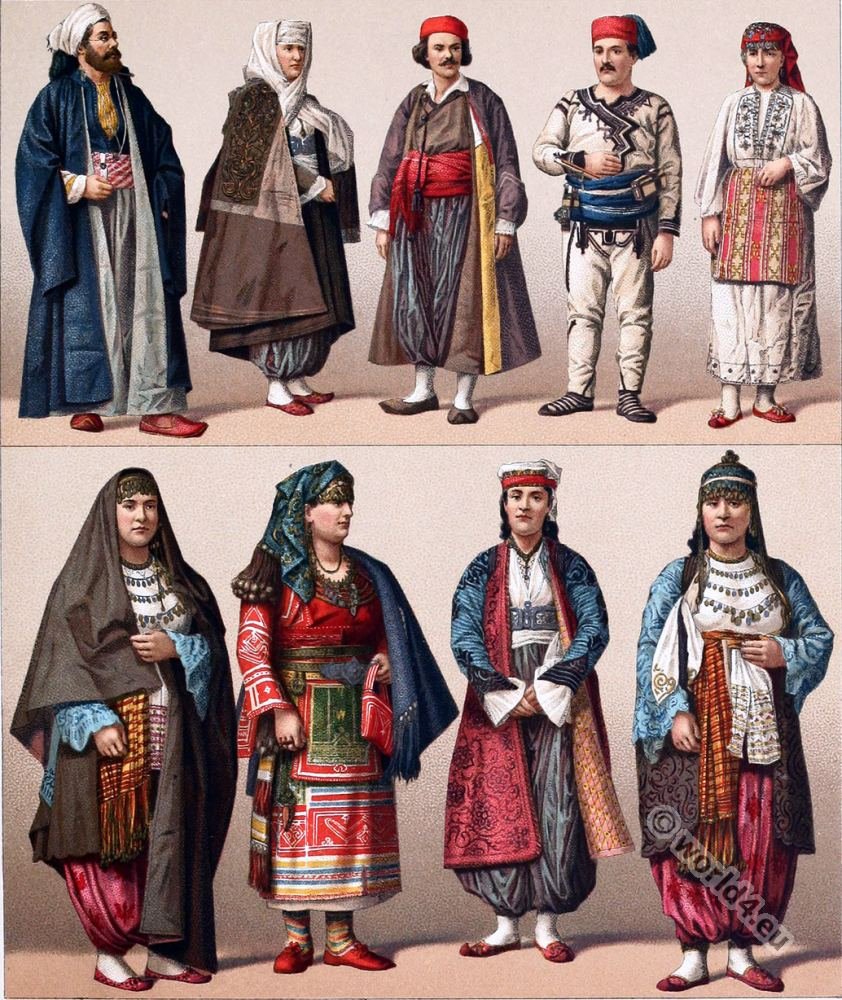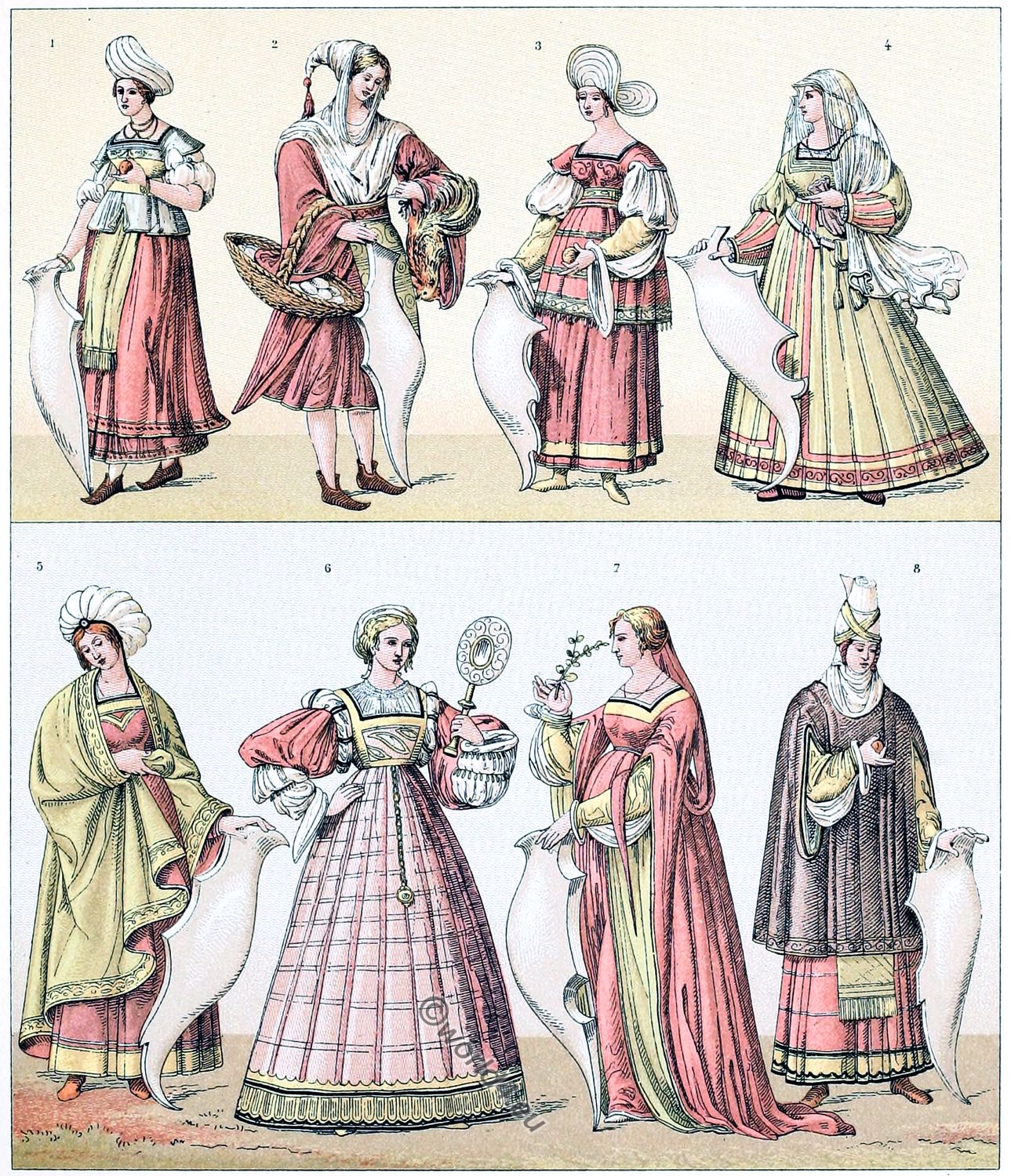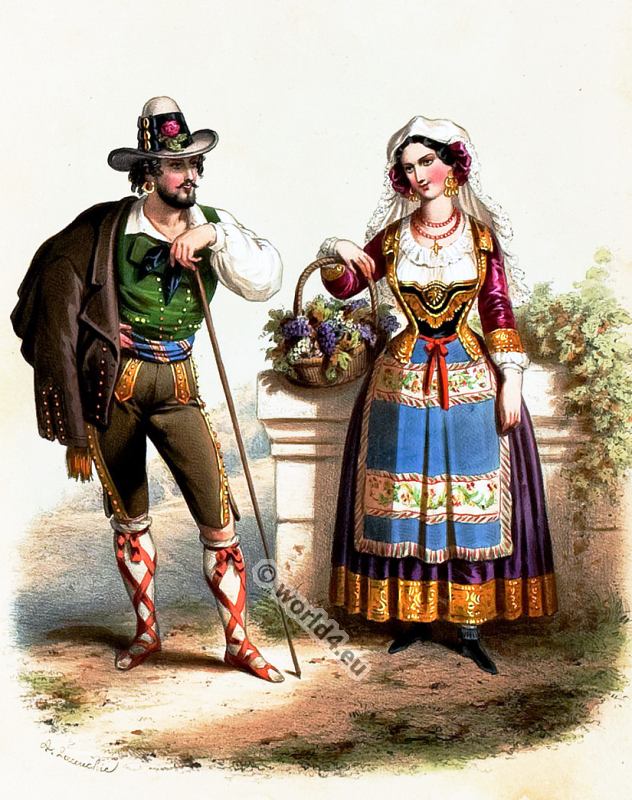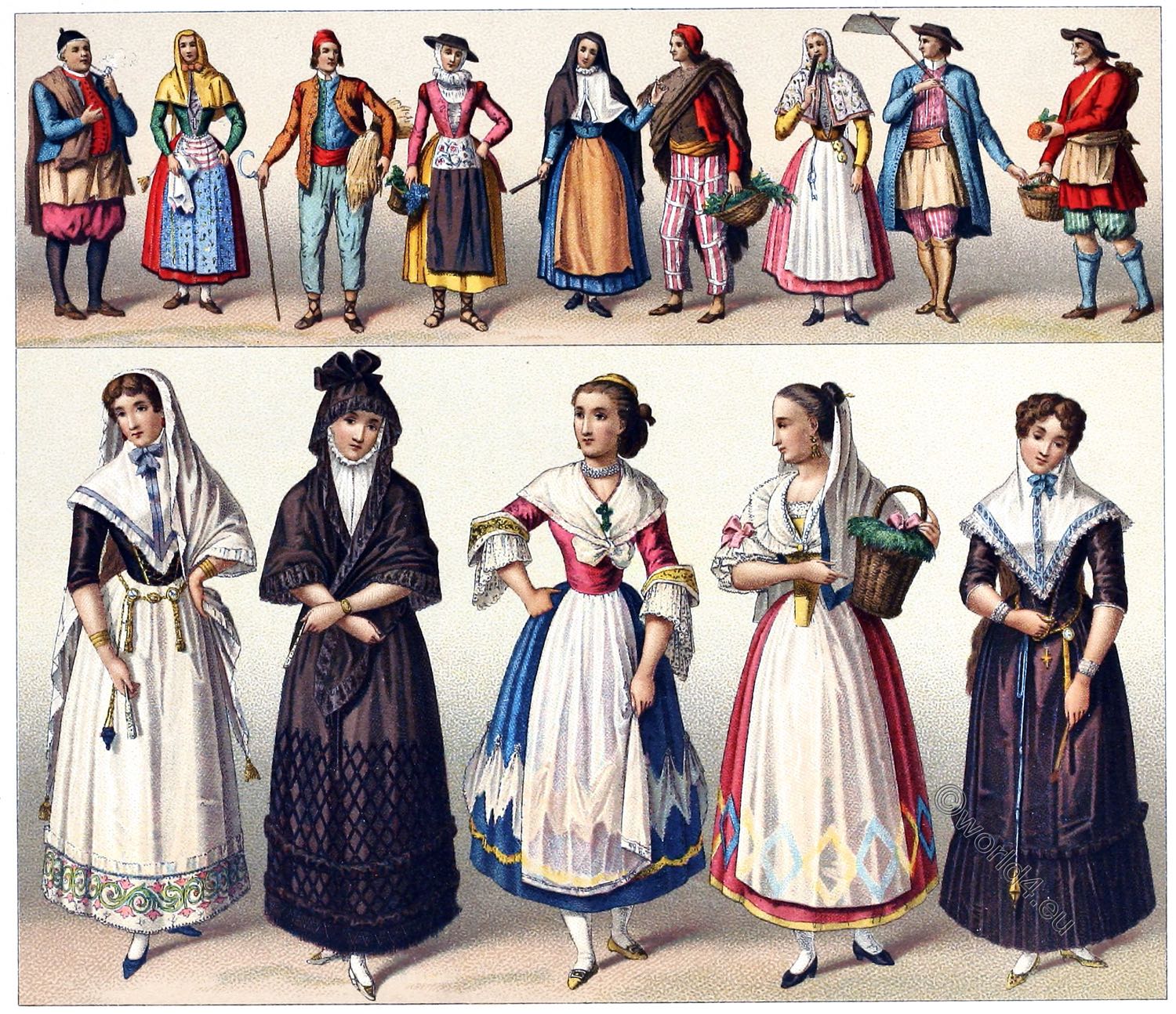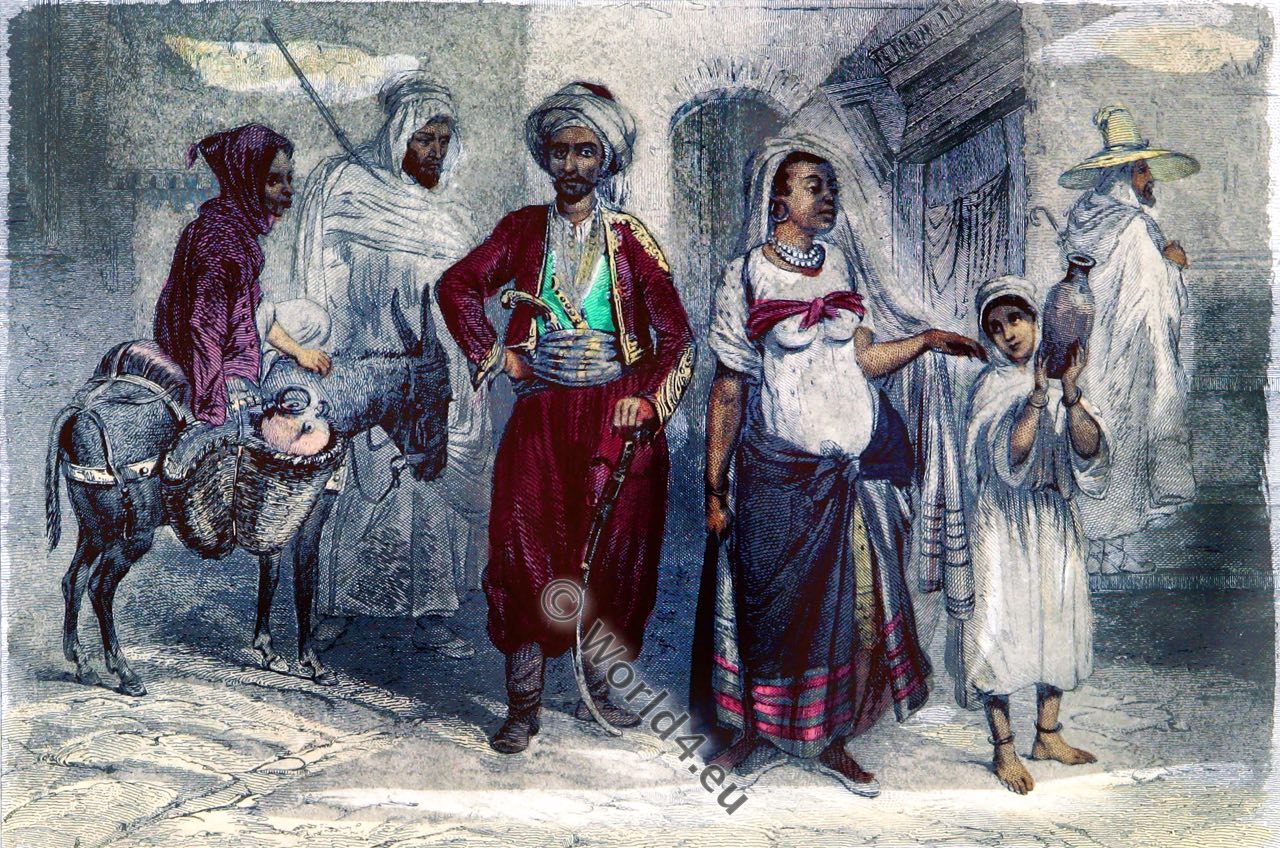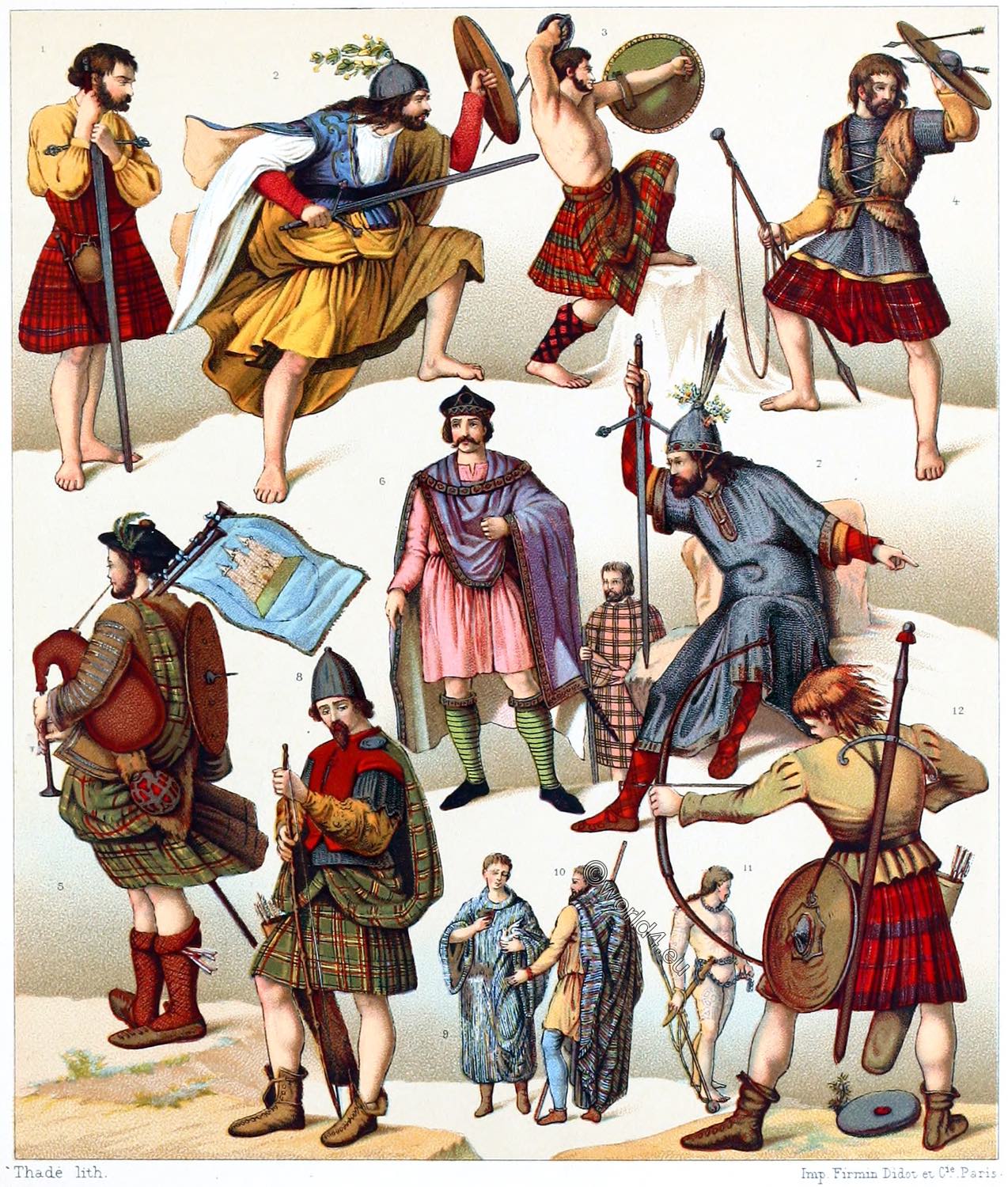Historical Turkish male and female costumes from the European part of the Ottoman Empire.
EUROPEAN TURKEY. MEN’S AND WOMEN’S DRESSES.
- No. 1, 2, 3, 6, 8 and 9, costumes from Scutari in Albania.
- No. 1. Hodja (Islamic religious scholar).
- No. 2. Christian woman; costume for the house and the city.
- No. 3. Christian priest.
- No. 6 and 9. Turkish woman; traditional costume in and outside the house.
- No. 4 and 7 Shepherd and farmer’s wife from Malissor (Albania).
- No. 5 Christian peasant woman from Matefre.
These costumes come from the Vilajets of Prizren (Prizrin Vilayeti) and Scutari, whose two governorates still included the former Upper Moesia *) and Upper Albania in 1873, where the figures were photographed. The population is predominantly Slavic, whose origins date back to ancient times and who still follow old traditions in their costumes. This is particularly evident in the embroidery of their robes with coloured threads and metallic silk. The fabric, which serves as canvas for these tapestries, is extremely fine and strong. The embroideries always form regular figures and their character corresponds to similar works in Bulgaria and Romania.
*) Mesia (Latin: Moesia; Greek: Μοισία, Moisia) is the name of several provinces of the Roman Empire (Superior, Inferior; Prima and Secunda), south of the limes of the lower course of the Danube, corresponding to present-day Serbia and Bulgaria, as well as parts of northern Macedonia or Romanian Dobruja. Its southern borders were the Balkans (Haemus) and the Šar Mountains (Scardus, Scordus, Scodrus), the Drina River (Drinus) to the west, the Danube to the north, and the Black Sea to the east. The region was inhabited mainly by Thracians and Illyrians, and was named after the Thracian tribe of the Mesi.
Source: History of the costume in chronological development by Auguste Racinet. Published by Adolf Rosenberg. Berlin 1888.
Related
Discover more from World4 Costume Culture History
Subscribe to get the latest posts sent to your email.

